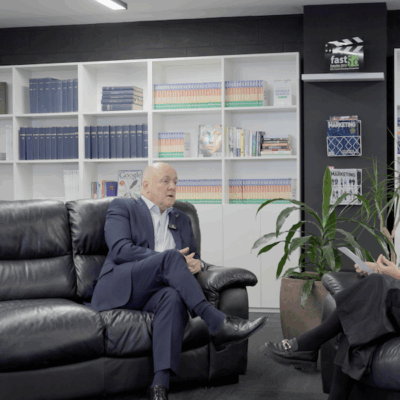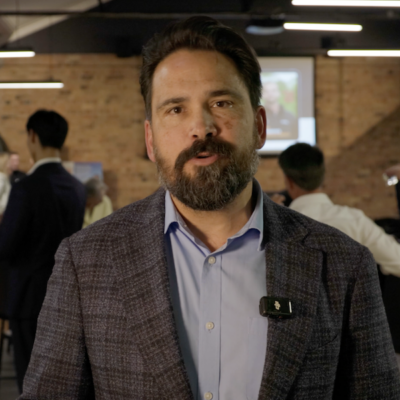Writing a creative brief for video production
Webflicks Founder/Producer Lou Harness covers the 5 essential parts to producing a successful creative brief for a business video. A creative brief for video production distils often complex business and […]
Webflicks Founder/Producer Lou Harness covers the 5 essential parts to producing a successful creative brief for a business video.
A creative brief for video production distils often complex business and marketing goals and aligns them with creative strategy. Developing a brief in pre-production provides an outline and working set of guidelines that inform the entire video production process.
It’s a memorandum of strategic and creative understanding.
A deceptively simple document – the nature and format of a creative brief will be dictated by the organisation and the project. Whatever the scale and complexity, a successful creative brief is ultimately a communication document that aims to create as much clarity as possible. It’s an opportunity to think freely. It sets out all the known relevant detail and invites a creative response.
Developing a creative brief is a collaborative process so you’re not on your own. Much of the detail will coloured in by the video production team as a reflection of many meetings, sharing of ideas, logistical considerations. A good production team will always begin with conversation. They work with clients to develop a preliminary brief that’s revised through a series of drafts as they deepen their understanding of the project and production parameters. This process informs the creative approach and story development for every project.
A successful creative brief will always include these five key elements:
1. KEY OBJECTIVES
Identify the story you want to tell and what you aim to achieve. Is the video intended to inform, or educate? Is the main purpose of the video to increase awareness, create engagement or stimulate conversation? How do you want your audience to feel? Act? The project may be a one-off investment or part of a broader plan to develop a video series. It may be topical, specific to a current energy or evergreen. Refining the key objectives will shape the style, tone and creative ideation of the project. Whatever the scale of your business it can be challenging to distil complex creative strategy. A useful process is to use an adapted version of a scriptwriting practice called “The Gun to the Head Exercise”.
(Insert Company Name) is a (Insert who we are/brand promise). We need a video that (insert aim) so that we can (insert desired result).
2. TARGET AUDIENCE
Outline the primary and secondary (and other) target audiences you want to speak to. It’s useful to share any relevant marketing information with the production team so that they can align with your brand and creative strategy. e.g., company values and target market personas.
Together the key objectives and target audience drive decisions on distribution. These considerations are all interwoven and, fundamentally, shape the creative.
3. DURATION/DISTRIBUTION
The various social media platforms have different accepted formats and requirements so depending on your intended distribution the footage may require separate creative treatments, durations and edits. Itemise every output you need and its intended length, distribution and format.
If the project is for website there will be greater flexibility but it’s essential to have a duration in mind e.g. 90 seconds (flexible). This is critical as it informs the creative approach and can determine how much footage is required. Most importantly, the narrative may be structured differently to work for different lengths. The intended distribution can also affect the way a project is shot – for example if a project is purely for social we may frame for a vertical ratio (9:16) or square (1:1). Don’t sweat the tech! Your video producer will work with you closely on this – resolutions, aspect ratios and video formats are all part of their thing.
So this part of your creative brief might end up looking something like this:
WEBSITE = 1 x 120 second (flexible) Brand Video
FACEBOOK = 1 x 15 second Vertical 9:16 ratio cut-down for Shared Post Video
INSTAGRAM (REELS) = 1 x 30 second Vertical 9:16 ratio cut-down
4. BUDGET
This section details what you have to spend and what deliverables you expect for that investment. You will have discussed budget already and will likely be working within a budget range. A range realistically allows for the development of the project parameters – given that budget is often loosely set prior to the producer becoming intimate with your project.
Every single decision in pre-production can affect the costings and the budget estimate can continue to shift until the creative brief is finalised. And beyond.
There are a multitude of factors influencing the budget including: talent, estimated shoot and edit days, locations, travel, specialised crew and equipment, licensing, graphics and animation. It’s a good idea to build in some continency to cover unforeseen or additional costs during the shoot (production phase). Your producer will keep you fully appraised of these.
Always be transparent when it comes to budget (and expect that in return). You are a partnership and are both invested in creating the best work – and with video production you get what you pay for. Production companies have ways of tailoring their creative and logistical approach to meet your budget. If this isn’t possible and you’re being unrealistic they will tell you. There is always a way forward.
5. PROJECT DEADLINE.
Here you need to clearly set out the date you need the project delivered – taking into account the time that the project will realistically take to develop and shoot. Work closely with your producer on this – there may be unexpected delays with crew or talent availability.
Delivery timeframes are often tight so let the video producer know if there’s any flexibility. Be assured that they’ll work as conservatively as possible. No one wants the stress of an unrealistic deadline when they’re navigating creative and logistical complexity.
There will be many other details that make their way into the brief. Tone, Style and Creative Ideation are sections that will be fleshed out as the production team deepen their understanding of your business and the project. Share anything that you think will help clarify direction including brand design, past video projects, mood boards or reference videos that appeal. Offer any ideas you have about the way you see the project looking or feeling. Anything goes here. The Creative Brief is an opportunity to think freely, collaborate and align.
Further reading from Louise Harness: ‘The power of connection in a new landscape’ Accessible, flexible and engaging, video is an incredible medium for connecting and communicating in a time of change. Click here or go to https://nzbusiness.co.nz/nzb-search?search_api_views_fulltext=Louise+Harness






